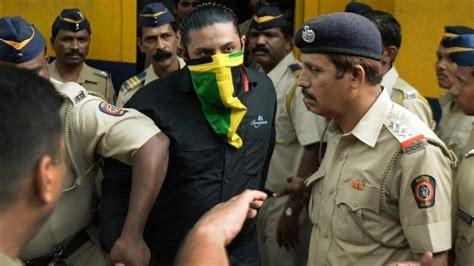
Mumbai: ‘ISIS Suspects Identified Targets For Serial Blasts’
A forensic examination of the explosive material recovered by investigators from “ISIS mastermind” Imran Khan and Mohammed Yunis Saki’s rental residence in Kondwa, Pune, has revealed that it contains sulphur powder, sulphuric acid, hydrochloric acid, phosphorus, nitrogen, potassium and sodium bicarbonate.
Additionally, the investigating agency found a flask / flask tube, which were used to create the mixture for an improvised explosive device (IED), sources said. These chemicals were not in a diluted form typically found in laboratories or other educational institutions; they are rarely found outside of industrial sector, the sources said.
These chemical components constitute the ingredients for IED and TNT explosives, the sources said.
Locations for serial blasts
The terror suspects were well-prepared to execute their operations and had identified several locations for serial blasts in Pune, the sources said.
ISIS terror module Al Sufa chief and mastermind, Imran Khan, along with Saki and the absconding accused, Rizwan, visited several places in Pune and Mumbai, the sources claimed. They went to Phansad National Park, Chandoli National Park, Satara gliding centre, and Chabad House in Mumbai, they said.
The agency recovered pictures and a map of Chabad House. The suspects were in the process of identifying crowded yet safe locations to plant explosives, with the aim of causing a larger impact, the sources said. They even travelled to Kerala via Goa and Karnataka to scout potential hideouts, they said.
Khan and two other individuals visited Pandharpur with the intention of robbing a bank or a jewellery shop to arrange funds for their terror operations, the sources said. However, they abandoned the plan and instead resorted to stealing motorbikes and selling them, they said. Their plans were foiled when they were arrested by the Pune Police on July 18 for bike theft, the sources said.
Explosive material linked to AI Sufa
During its investigation, the National Investigation Agency found that the explosive material was linked to Al Sufa. Khan, along with two accomplices, managed to escape during NIA raids in multiple locations of Al Sufa hideouts in Madhya Pradesh and Rajasthan in connection with an explosives case in February 2022.
While escaping, Khan arranged for the transportation of the explosive material. Later, he organised the storage of these materials in Padgha, near Bhiwandi, with the assistance of accused individuals Akif Nachan and Shamil Nachan.
Two-day workshop
Further investigation revealed that on the instructions of Khan, Shamil and Akif travelled to Pune, carrying explosive chemicals and processed explosive powder. They participated in a two-day workshop in Kondhwa, Pune, in April 2022, dedicated to the manufacturing, training and testing of IEDs. Subsequently, they returned with fabricated IED explosives, remaining processed powder and chemicals. These materials were then concealed at an undisclosed location in Padgha.
The investigation is ongoing to recover the remaining materials, the sources said.
Source » msn.com





